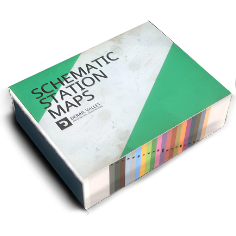Water Storage: Difference between revisions
Appearance
importing old manual |
m Tweaks |
||
| (4 intermediate revisions by 2 users not shown) | |||
| Line 2: | Line 2: | ||
<translate> | <translate> | ||
<!--T:1--> | <!--T:1--> | ||
Steam vehicles need | {{pll|Steam Overview|Steam-powered vehicles}} need plenty of water to generate steam, so they carry it onboard. Some {{pll|Rail Vehicle Types|locomotives}} are comprised of two units, with the first one carrying a large {{pll|Boiler|boiler}}, and the second, called the {{pll|Rail Vehicle Types|tender}}, carrying a water tank reserve. Others have both the boiler and the tank on a single unit. The single unit locomotives are called tank locomotives, and are usually small and made for {{pll|Shunting|shunting}}, or short travel distances. | ||
<!--T:2--> | |||
Water from the storage is supplied to the boiler by a device called the {{pll|Injector|injector}}. | |||
<!--T:3--> | |||
If the water storage runs dry it needs to be {{pll|Servicing Overview|refilled}}. | |||
</translate> | </translate> | ||
[[Category:Water Management|1]] | [[Category:Water Management|1]] | ||
Latest revision as of 00:34, 18 March 2025
Steam-powered vehicles need plenty of water to generate steam, so they carry it onboard. Some locomotives are comprised of two units, with the first one carrying a large boiler, and the second, called the tender, carrying a water tank reserve. Others have both the boiler and the tank on a single unit. The single unit locomotives are called tank locomotives, and are usually small and made for shunting, or short travel distances.
Water from the storage is supplied to the boiler by a device called the injector.
If the water storage runs dry it needs to be refilled.
